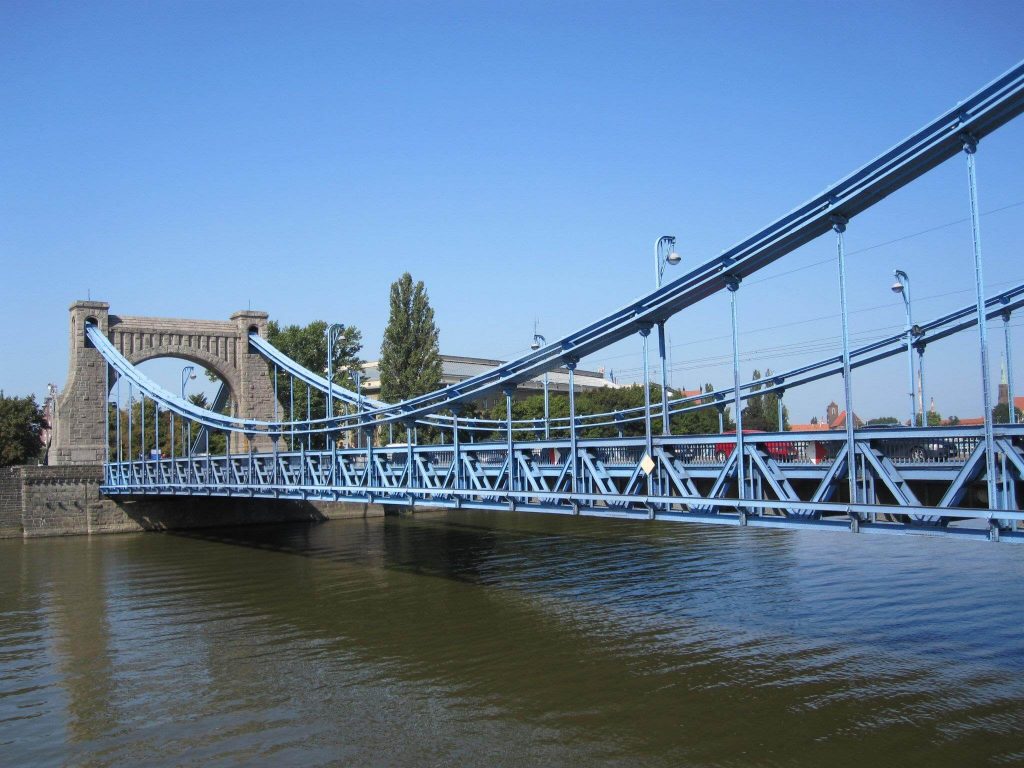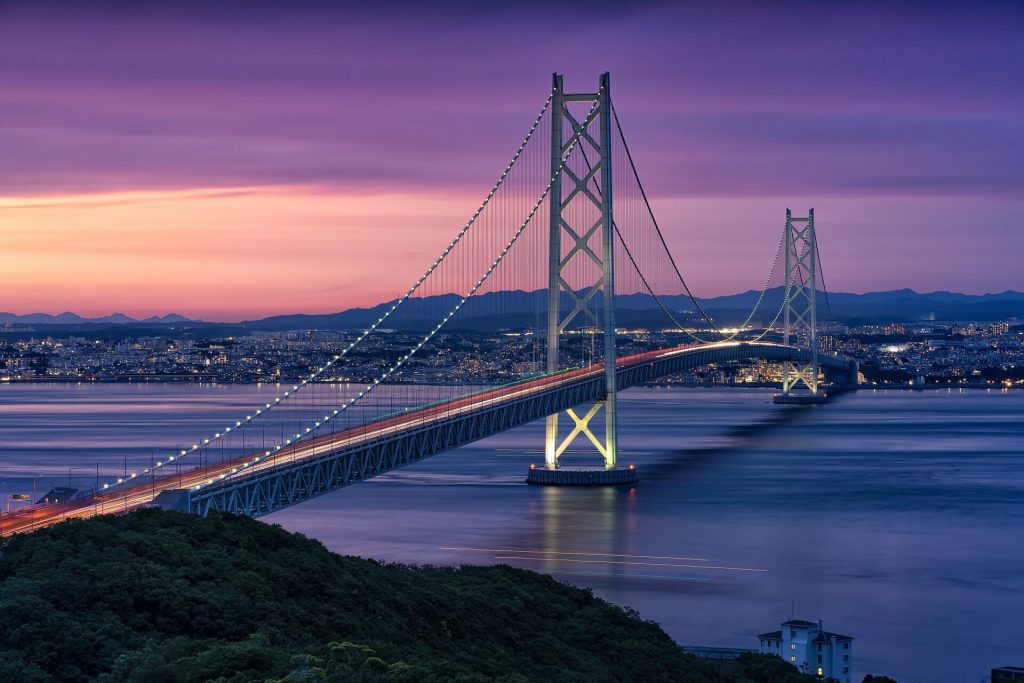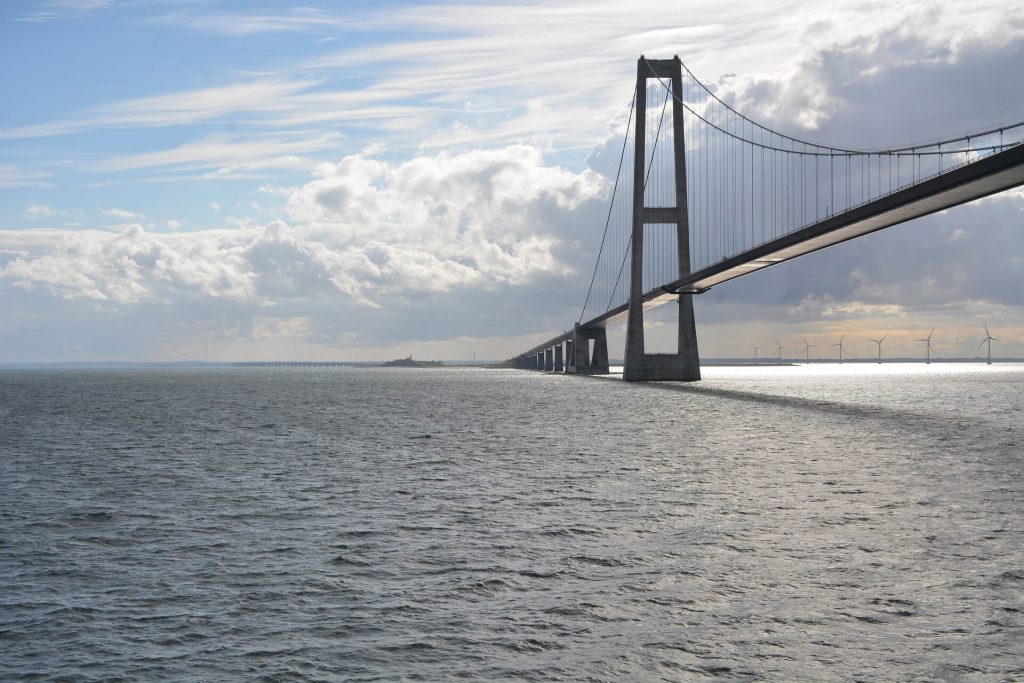Grunwaldzki Bridge in Wrocław, Odra River – a suspension bridge over the Odra River, with a riveted steel structure. The load-bearing elements are supported on pylons made of clinker bricks and faced with granite, about 20 m high.
Built in 1908–1910, the bridge was built as part of the construction of a new route (current Grunwaldzki Square) connecting the city center with the housing estates and institutions of eastern Wrocław. The architect of the bridge architecture was Richard Plüddemann, city building adviser, the contractor was Beuchelt u. Co. from Zielona Góra. The bridge was opened on October 10, 1910. According to Łagiewski, Emperor Wilhelm II was at the opening ceremony, but in fact the emperor, although invited, failed to come. The bridge, together with the construction of the quays, cost over 2.8 million marks.
During the siege of Wrocław, the Germans, wanting to reduce the bridge’s vulnerability to destruction, tore off the risers, so that the bridge would fall down and rest on temporary supports built in the river on the basis of sunken barges, wood and stone rubble. In addition, due to the construction of a field airport in the immediate vicinity of the bridge, the height of the pylons was reduced at the request of the German authorities, dismantling their upper parts, especially the right-bank pylons. Air bombardments, artillery fire and damage to the temporary supports on which the bridge rested in 1946 by the Oder caused numerous and serious damages to the steel elements of the bridge. Despite this, during the siege and later until the spring of 1946, the bridge was fit for use and traffic flowed over it. In the spring of 1946, the bridge was closed for reconstruction, which was carried out until September 1947. The technically difficult and costly (PLN 22 million) operation included the construction of new temporary supports, raising the bridge, replacing or welding cracked, broken or deformed steel elements, adjusting the displaced load-bearing elements, repair of road surfaces and sidewalks. In addition, according to the design of Dobrosław Czajka and Jerzy Rzepecki, the upper parts of the pylons were rebuilt from the materials preserved by the Germans, although without the reconstruction of some elements (helmets on the pylons, some bas-reliefs), as a result of which the pylons are lower than the original ones. The bridge was opened on 6 September 1947.
In 1956, the roadway was reconstructed, in 1966 the tracks were replaced, in 1982 the road surface, in 1990 the roadway was widened by narrowing the sidewalks, the roadway and track surface were replaced, in 2003-2005 a major renovation was carried out, including stabilization of bearings, repair and anti-corrosion protection of steel elements of the bridge, replacement of the surface of the roadway and track, protection of granite casings of quays and pylons.
Tram lines run across the bridge, using the track built into the roadway. There are 691 cyclists per hour on pavements (no bicycle path) (data from 2016).
The length of the bridge deck is 112.5 m, its width is 18 m, and the span is 114 m (126.6 m measured between the pylon axes on opposite banks). The pylons originally had a height of 25.54 m from the ground, but as a result of their lowering in the years 1945 – 1947, they are now lower.
Initially, it was called the Imperial Bridge (Kaiserbrücke), from 1919 the Bridge of Freedom (Freiheitsbrücke), and after A. Hitler took power, the original name was restored. On September 6, 1947, it was given the name of the Grunwaldzki Bridge.



